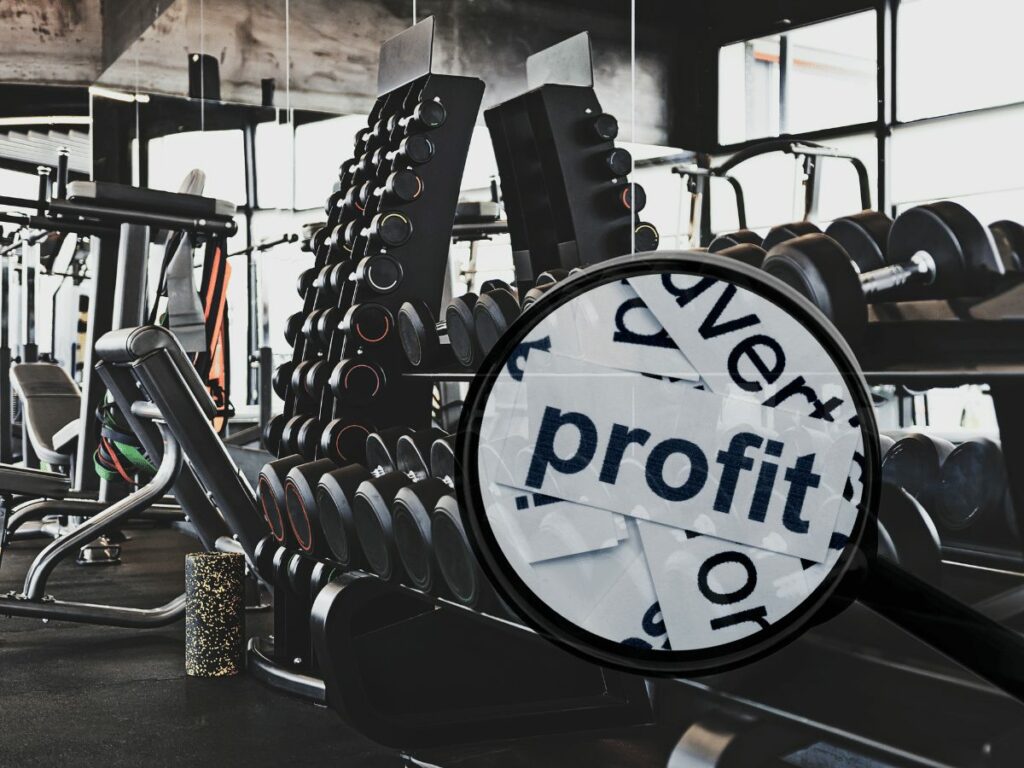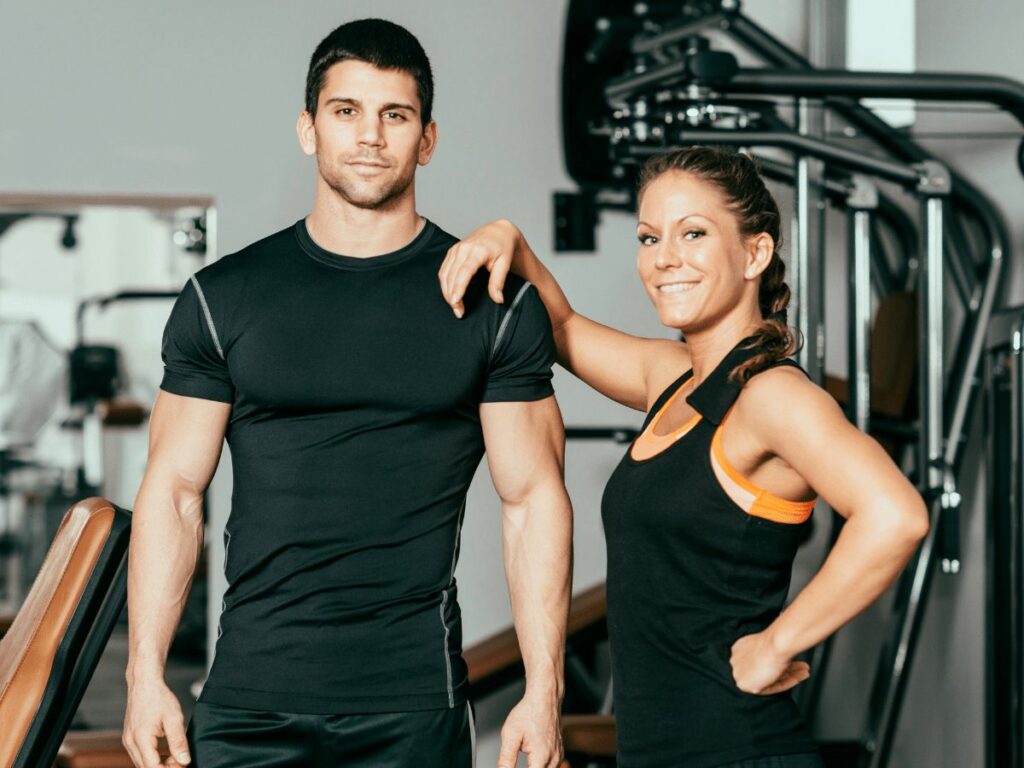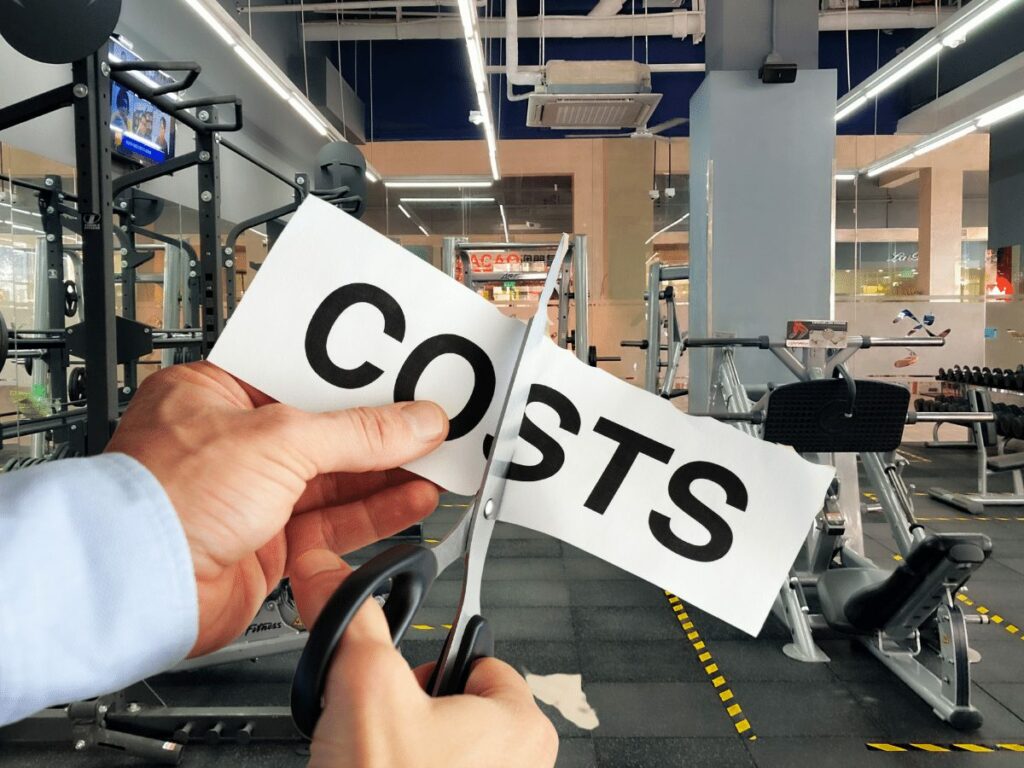Ever wondered what it takes to start a gym from scratch? The fitness industry is booming, and many entrepreneurs are eager to get a piece of the action. However, there are a lot of questions and concerns that arise when thinking about opening a small gym, especially concerning the financial aspects.
The average cost to start a small gym ranges from $10,000 to $50,000. This depends on various factors such as location, size, equipment, and additional amenities. This blog post will break down the real numbers behind starting a small gym, ensuring that prospective business owners have a clear understanding of the financial commitments involved.
Read on and discover!
Table of Contents
1. Detailed Breakdown of Gym Opening Costs
When diving into the fitness business, a precise understanding of the initial investment is essential. A detailed breakdown of gym opening costs offers aspiring gym owners a clear picture of where the capital will be allocated. Let’s unpack this together.
Lease or Purchase of Gym Location
Securing the right space is the cornerstone of a successful gym business. When looking for a location, factors such as size, accessibility, and competition should be considered. For instance, renting a space in a busy urban area might attract more clientele. On the other hand, purchasing a property might incur higher upfront costs but could be cost-effective in the long run. It’s all about striking the right balance, which includes accounting for gym equipment maintenance cost.
Renovation and Interior Setup
Once the location is secured, it’s time to create an inviting atmosphere. Flooring, lighting, mirrors, and paint are just a few of the elements that need attention. Yanre Fitness, a reputable brand in the gym industry, offers expert advice on designing the interior space for optimum functionality. For instance, a popular trend is the open-plan layout, which provides flexibility in arranging equipment. First impressions do matter!
Fitness Equipment
The heart of any gym is its equipment, and when choosing fitness equipment for small gym business owners who are just starting out, it’s vital to invest in quality pieces that will withstand the test of time. Look for brands that offer a range of options to suit different budgets and needs while considering gym operating expenses.

- Dumbbell Set: Dumbbells are versatile and essential for a wide range of exercises. From building strength to improving muscle tone, they are a staple in every gym. They come in various sizes and materials. Make sure to include a set of dumbbells with varied weights to cater to the different fitness levels of the members.
- Training Bench: A training bench is a fundamental piece of equipment for weight training exercises. Look for an adjustable and well-constructed bench that can be used for multiple exercises, such as incline dumbbell fly, decline bench press, and Bulgarian split squats.
- Barbell Set: Including a barbell set in the gym is vital as it’s great for compound movements like squats and deadlifts. Opt for an Olympic bar set with removable plates or a set of fixed or easily adjustable barbells.
- Kettlebell Set: Kettlebells provide an excellent alternative to dumbbells. They are especially good for full-body workouts and targeting the core muscles. They come in different weights and can be used for exercises like kettlebell swings, goblet squats, and Turkish get-ups.
- Free Weights (Barbells and Dumbbells): It’s crucial to have free weights available as they form the foundation of equipment stock. ScienceDirect says that free-weight training has benefits in improving leg and triceps strength as well as in the subjective perception in older adults. Make sure to have a decent range of fixed and Olympic barbells along with dumbbells.
Business Permits and Insurance
Staying compliant is non-negotiable. Gym owners need to acquire the necessary permits and adhere to local regulations. Additionally, various insurance policies, such as general liability and workers’ compensation, must be in place. Make sure to adhere strictly to local regulations. Skipping this step is not an option.
Hiring and Training Staff
A team of dedicated professionals is integral to the gym’s success. Hiring qualified trainers, receptionists, and maintenance staff is crucial. Additionally, continuous training and certifications ensure that the team stays up-to-date with industry standards. The staff is the face of the business.

Marketing and Branding
Creating a strong brand identity and marketing strategy is imperative. From the logo to the website, every element should reflect the gym’s mission and values. Moreover, leveraging social media and other marketing channels can significantly enhance visibility. Make the brand unforgettable.
2. Operational Expenses
After the grand opening, a new set of expenses comes into play – Operational Expenses. Managing these recurring costs effectively is crucial for the gym’s sustainability and growth. Let’s dive in.

Utility Bills (water, electricity, etc.)
Utility bills are a significant portion of monthly expenses. It’s essential to keep an eye on water, electricity, and other utility costs. Implementing energy-efficient practices can reduce these bills over time. Every bit of saving counts.
Monthly Staff Salaries and Benefits
Paying competitive salaries and offering benefits are vital to retaining talented staff. Additionally, incentives based on performance can motivate the team to excel. It’s a fine balance between ensuring fair compensation and managing expenses. The team is the most valuable asset.
Equipment Maintenance
Regular maintenance of gym equipment is essential to ensure safety and prolong its lifespan. Having a maintenance schedule and using quality products, like those that can minimize downtime and repairs. Don’t let a broken treadmill ruin the day.
Cleaning and Sanitation
Maintaining a clean and hygienic environment is paramount. Regular cleaning and sanitation practices ensure a safe space for both staff and members. Also, it enhances members’ overall gym experiences. A clean gym is a happy gym.
- Keep Hands Clean: Regular hand washing is crucial in any gym setting. Encourage members to wash their hands with soap for at least 20 seconds before and after workouts, as this significantly reduces the spread of germs.
- Sanitize Gym Equipment: Instruct staff to sanitize gym equipment before and after use. Providing disinfectant wipes or sprays for this purpose not only ensures a clean environment but also protects members from germs.
- Promote the Use of Personal Towels and Mats: Encourage gym-goers to bring their own towels and exercise mats. Shared towels and mats can harbor bacteria and fungi, increasing the risk of infections.
- Implement Footwear Policies: Establish a rule for members to wear water shoes or flip-flops in locker rooms and showers. This practice can prevent exposure to fungi that cause infections like athlete’s foot.
- Encourage Bringing Water Bottles with Lids: Promote the use of water bottles with lids among members. This minimizes the risk of germ transfer, as open cups can get contaminated easily.
- Discourage Sharing of Personal Items: Advise members against sharing towels, water bottles, headphones, and other personal items. Sharing these items can increase the risk of germ transmission.
- Proper Cleaning Attire for Staff: Staff should wear gloves and other personal protective equipment while cleaning. This prevents the spread of germs and ensures thorough cleaning.
- Adhere to Disinfectant Directions: It’s essential for cleaning staff to allow disinfectant liquids to stay on surfaces for the recommended amount of time before wiping them off. This ensures effective germ elimination.
- Educate Gym Members: Providing educational material on hygiene practices can be beneficial. Awareness among gym members regarding hygiene practices plays a significant role in maintaining a clean environment.
- Select Cleaning Products Wisely: Opt for commercial disinfectants that are effective against a broad range of pathogens. Ensure that the cleaning products used in the gym are efficient in eliminating germs and bacteria.
3. Potential Additional Costs
Beyond the basic expenses, gyms may incur Potential Additional Costs. These are often overlooked but can be the difference between a generic and an outstanding fitness facility. Let’s explore what these might be.

Technology Integration
Gyms must embrace the digital age by integrating modern technology such as gym management software and security systems. Employing management software helps in organizing schedules, tracking memberships, and handling payments efficiently. Stay ahead with technology!
Advantages:
- Streamlined Operations: Gym management software allows gym owners to streamline business operations by automating routine tasks such as member check-ins, membership renewals, and data entry.
- Enhanced Member Management: The software helps in effectively managing members by automating marketing and lead generation. This results in better member acquisition and retention, which is vital for the growth of the gym.
- Reduction in Administrative Burden: Gym management software can ease the lengthy administrative tasks such as signing up new members, filling out contracts, and canceling memberships.
- Client Acquisition: Specialized gym management software helps in maximizing new member acquisition by initiating triggers that provide insights into where a prospective client is in the sales funnel. Owners can use this information to create automated communication such as emails to keep potential members engaged.
- Flexible Payment Processing: Gym management software offers flexibility in processing payments. Members can make payments from anywhere in the world without restrictions, which is particularly useful for gyms that operate online or have an international clientele.
Special Amenities
Adding value to the gym with special amenities like locker rooms, showers, and juice bars is a game-changer. When members discover these comforts, their satisfaction levels soar, which boosts retention rates. Personally, I can tell amenities such as juice bars can also act as an additional revenue source. Going the extra mile with special amenities positions the gym as a premium fitness destination.
The table below highlights the benefits of incorporating special amenities in a gym, such as locker rooms, showers, and juice bars. Discover how these amenities enhance member satisfaction, differentiate the gym from competitors, and even provide additional revenue opportunities, positioning it as a premium fitness destination.
| Benefits | Description |
| Enhanced Member Satisfaction | Special amenities like locker rooms, showers, and juice bars provide added comfort and convenience to members, increasing their satisfaction levels and fostering loyalty and retention. |
| Differentiation and Competitive Edge | Offering unique amenities sets the gym apart from competitors, positioning it as a premium fitness destination and attracting individuals seeking an elevated workout experience. |
| Additional Revenue Opportunities | Amenities like juice bars or retail shops within the gym can serve as additional revenue sources, generating income through product sales or additional services provided to members. |
| Convenience and Time-Saving | Locker rooms and showers allow members to freshen up and change on-site, saving time by eliminating the need to go home before or after workouts. This convenience appeals to busy individuals with packed schedules. |
| Promotes Healthy Habits | Amenities like juice bars offer nutritious refreshments and promote healthy choices, encouraging members to refuel with quality beverages or snacks after their workouts. |
| Enhanced Facility Appeal | Special amenities add to the overall appeal and attractiveness of the gym, creating a welcoming and comfortable environment that members enjoy spending time in, further enhancing their fitness journey. |
| Increased Member Engagement | By offering amenities that cater to members’ needs and preferences, gyms can foster a sense of community and engagement, as individuals are more likely to stay longer and interact with fellow members. |
| Positive Word-of-Mouth and Referrals | Satisfied members who appreciate the special amenities are more likely to share positive experiences with others, leading to word-of-mouth recommendations and potential new member referrals. |
Group Fitness Classes or Personal Training Services
Expanding the gym’s services by incorporating group fitness classes and personal training sessions is a wise strategy. Such additions cater to a broader audience, from novices seeking guidance to seasoned fitness enthusiasts looking for community-driven challenges. Moreover, these services can be an essential source of income, supplementing the revenue from standard gym memberships. Diversity is the spice of life.
4. Rough Estimate of the Total Cost to Open a Small Gym
On average, the cost to open a small gym ranges from $10,000 to $50,000. This figure can fluctuate depending on location, the scale of operations, and the chosen amenities. Securing high-quality equipment from known brands like Yanre Fitness could represent a significant portion of the initial investment. A clear financial blueprint is the key to success.
5. 5 Factors That Influence the Cost of Opening a Gym
Opening a gym can be a highly lucrative venture, especially in an era where health and wellness are gaining prominence. Aspiring entrepreneurs must consider a variety of factors that influence the cost of this business endeavor. Consider the factors below:
#1 Location and Premises
When starting a gym, location is a significant factor influencing the cost. A gym needs to be situated where there is ample demand, like in residential or commercial areas. Securing premises in such locations can be expensive. I believe the size of the property is also essential. A larger space will incur higher rental costs but may attract more clients.
#2 Licenses and Insurance
A gym owner must obtain various licenses and insurance policies. The business license ensures that the gym operates within the legal parameters set by local authorities. Gyms are prone to accidents and equipment damage, it is crucial to have comprehensive insurance coverage. This includes general liability, theft, workers’ compensation, and property-casualty insurance, which protects against legal, financial, and medical liabilities.
#3 Equipment and Maintenance
Quality equipment is the backbone of any gym. Investing in state-of-the-art training equipment can be costly, but is vital for attracting and retaining clientele. Moreover, maintenance is indispensable as the equipment will inevitably require repairs or replacements over time. This also includes costs associated with maintaining gym floors, mats, and other supplies. Allocating adequate funds for equipment and its maintenance is imperative.
#4 Staff and Trainers
Hiring experienced trainers and staff members is crucial for operating a gym successfully. However, this translates into salaries and potential benefits that must be factored into the costs. Additionally, it’s important to retain quality staff, as high employee turnover can lead to instability and added expenses in recruiting and training new hires.
#5 Marketing and Community Engagement
Building a customer base is critical for the success of a gym. This involves marketing and advertising efforts, which require an allocation of funds. Moreover, I have seen community engagement is equally vital. This can be an essential aspect in differentiating a gym from competitors and building customer loyalty.
Conclusion
We’ve explored the realistic financial aspects of starting a small gym, covering everything from initial setup and operational costs to potential additional expenses. Considering the kind of clientele, managing membership and subscription fees, and setting apart the business from competitors become essential.
Are you ready to make the leap into the cost-effective gym industry? Those with inquiries or seeking guidance in this venture, please don’t hesitate to get in touch with our team of experts. Yanre Fitness is also ready to give guidance for fitness equipment choices. Let’s build a healthy business together. Contact us today!
Related articles:








